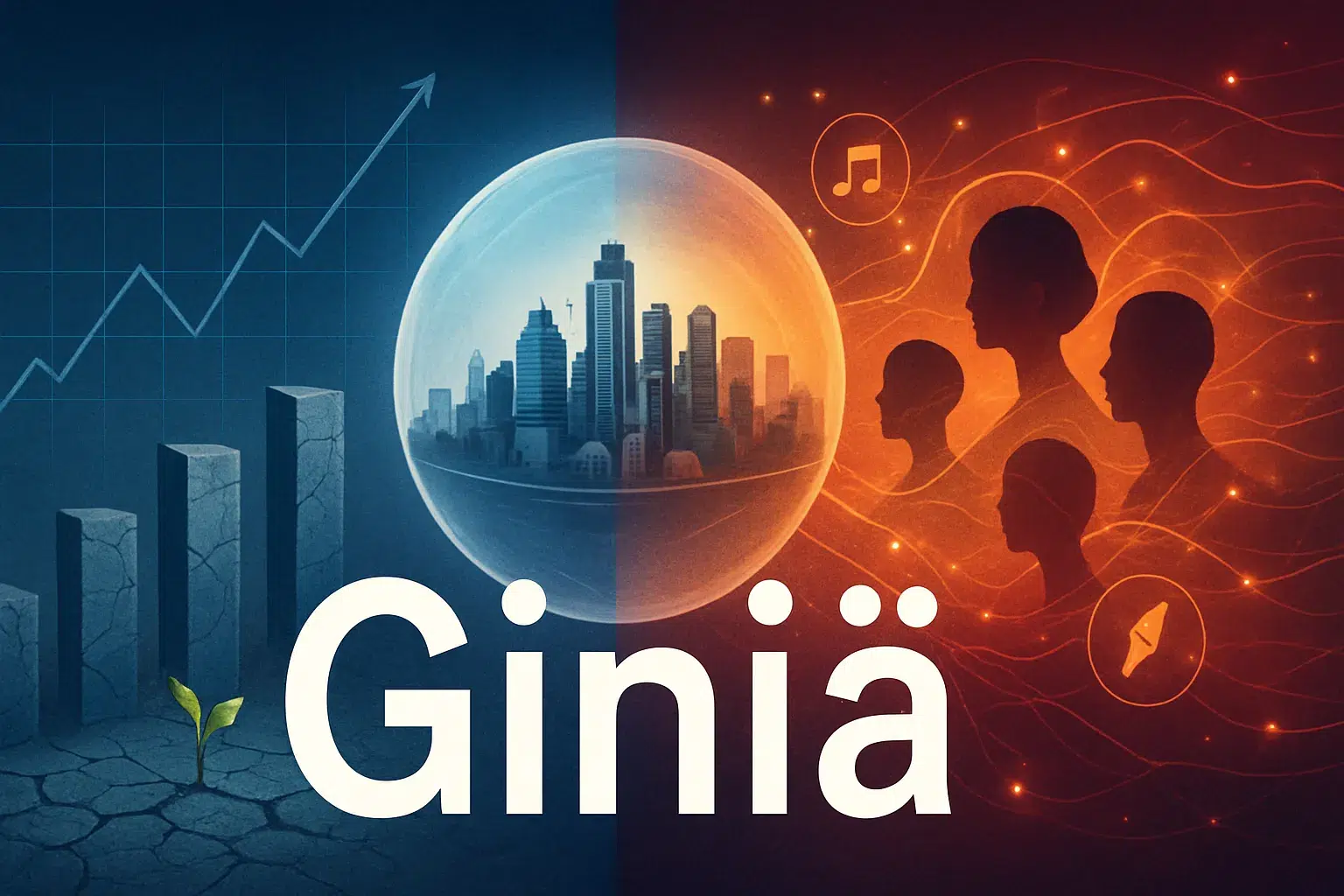In today’s fast-paced world, understanding the nuances of modern economics is more critical than ever. One term that has captured attention across various sectors is “giniä.” This concept not only shapes economic theories but also influences cultural dynamics and personal identities. As we delve into the impact of giniä on contemporary society, you’ll discover its origins, significance, and practical applications in our daily lives. Whether you’re a student of economics or simply curious about societal trends, this exploration will provide valuable insights into how giniä affects us all. Let’s dive in!
Table of Contents
The Impact of Giniä on Modern Economics: What You Need to Know
Giniä influences modern economics by highlighting income inequality and its effects on growth. This measure, derived from statistical analysis, helps economists assess how wealth is distributed within a society. A high giniä score often indicates economic disparity, prompting policymakers to address the root causes.
Moreover, understanding giniä enables businesses to tailor their strategies effectively. By recognizing the socioeconomic landscape, companies can better target their products and services while fostering inclusive practices that promote equity in the marketplace. This awareness drives both innovation and social responsibility.
What is giniä?
Giniä is a concept originating from the Gini coefficient, which measures income inequality within a population. It reflects how wealth is distributed among individuals or households. A lower giniä value indicates more equal distribution, while a higher value suggests greater disparity.
Beyond economics, giniä encompasses broader societal implications, influencing social mobility and access to resources. Understanding giniä helps assess economic health and informs policies aimed at reducing inequality and promoting equitable growth across various sectors of society.
The Origin of giniä
The term “giniä” traces its roots to the Gini coefficient, developed by Italian statistician Corrado Gini in 1912. This statistical measure was created to gauge income inequality within a population. Its foundational role in economics sparked interest across various fields.
As societies evolved, so did the significance of giniä beyond mere numbers. It began representing broader social dynamics and issues related to fairness and equity. Today, giniä serves as a crucial reference point for discussions about wealth distribution on both national and global scales.
Why giniä Matters
Understanding giniä is crucial for grasping modern economic dynamics. It serves as a lens through which we can view income inequality and societal disparities. By analyzing giniä, policymakers can identify areas needing attention, ensuring that economic growth benefits everyone.
Furthermore, giniä influences social stability and cohesion. High levels of inequality can lead to unrest and dissatisfaction among citizens. Addressing these issues promotes fairness and inclusivity in society, making it essential for sustainable development in today’s interconnected world.
Giniä in Culture
Giniä plays a significant role in shaping cultural narratives. It influences how societies perceive wealth and success, often dictating social norms and values. In many cultures, giniä reflects the balance between individualism and collectivism.
Art, literature, and music frequently explore themes related to giniä. They highlight disparities while celebrating resilience among marginalized communities. Thus, giniä not only defines economic status but also enriches cultural identity through diverse expressions of struggle and triumph.
Practical Uses of giniä
Giniä has practical applications across various sectors. In economics, it serves as a metric for measuring income inequality within populations, influencing policy decisions and socioeconomic strategies. Policymakers utilize giniä to identify disparities and design targeted interventions aimed at promoting equitable growth.
Beyond economics, giniä finds its place in business analytics. Companies analyze consumer behavior through the lens of giniä to tailor their marketing efforts. This helps businesses understand market segmentation better and optimize resource allocation for maximum impact.
Giniä and Identity
Giniä significantly shapes individual and collective identities. It influences how communities define themselves, fostering a sense of belonging that transcends geographical boundaries. This interconnectedness creates networks where shared identity can thrive.
Moreover, giniä encourages self-expression through various forms such as art, literature, and social movements. People relate to their cultural heritage while also embracing modern realities. As societies evolve, the interplay between tradition and contemporary issues highlights the dynamic nature of identity shaped by giniä’s influence.
Giniä in the Digital Era
Giniä has found a unique place in the digital landscape. With the rise of social media and online communications, this concept influences how brands connect with consumers. Companies increasingly leverage giniä to create more relatable content that resonates with diverse audiences.
Moreover, data analytics allows businesses to measure giniä’s impact on engagement rates effectively. Understanding these dynamics helps marketers tailor their strategies while fostering inclusivity and authenticity in their messaging across various platforms. Giniä plays a vital role in shaping modern digital interactions.
Benefits
Giniä offers numerous benefits in modern economics. It serves as a powerful tool for measuring inequality within societies, allowing policymakers to identify disparities and create targeted interventions.
Additionally, giniä fosters greater awareness of social issues among the public. This can lead to increased civic engagement and support for policies aimed at reducing inequality, ultimately promoting economic stability and growth.
Global Influence
Giniä has transcended borders, influencing economies and cultures worldwide. Countries are increasingly adopting giniä principles to address income inequality and foster social cohesion. This global integration allows for diverse interpretations of giniä, shaping local policies while maintaining a universal framework.
Organizations and governments leverage giniä to guide economic strategies in various contexts. Its impact is evident in international trade agreements, philanthropic efforts, and community development initiatives. As nations collaborate under the banner of giniä, they share knowledge that enriches their approaches to modern economics.
Psychological Impact
Giniä significantly influences psychological perceptions in modern society. It shapes how individuals view their status and self-worth, often creating a sense of belonging or alienation. People may feel pressure to conform to certain standards associated with giniä, impacting mental health.
Moreover, the effects of giniä extend into group dynamics, influencing how communities interact and relate to one another. This can lead to heightened competition or collaboration based on shared values tied to giniä. Understanding this impact is crucial for fostering healthier social environments.
Giniä and Branding Power
Giniä plays a significant role in branding power by influencing how consumers perceive a brand’s values and identity. When brands align themselves with the essence of giniä, they resonate more deeply with their target audience, creating emotional connections that foster loyalty.
Moreover, leveraging giniä can enhance a brand’s market positioning. It helps businesses differentiate themselves from competitors by appealing to cultural narratives and social movements. As consumers increasingly prioritize authenticity, brands embracing giniä are likely to thrive in today’s competitive landscape.
Case Studies
Case studies of giniä reveal its multifaceted influence across different sectors. For instance, in the tech industry, companies harness giniä to enhance user experience and engagement. This strategic application has led to significant market growth.
In fashion, brands leverage giniä to create unique identities that resonate with consumers. By analyzing demographic data through the lens of giniä, these companies craft targeted marketing campaigns, boosting brand loyalty and sales. Such examples illustrate how understanding giniä can drive innovation and competitive advantage.
Future
The future of giniä is poised for significant evolution as it adapts to changing societal values and technological advancements. As more individuals embrace diverse identities and cultural expressions, giniä will likely become a crucial factor in shaping economic trends.
Emerging markets are beginning to recognize the importance of giniä in branding, consumer behavior, and social interactions. This growing awareness may lead to innovative applications across various sectors, enhancing its relevance and impact on modern economics worldwide.
Challenges
Giniä faces several challenges in modern society. One significant hurdle is the misconception surrounding its meaning and application. Many people struggle to grasp its relevance, which can dilute its impact on economic discussions.
Additionally, the integration of giniä into policy-making remains inconsistent. Policymakers often overlook this concept when addressing inequality or cultural identity issues. This gap can perpetuate misunderstandings and limit the potential benefits that a deeper understanding of giniä could bring to societal progress.
Giniä and Language Evolution
Giniä has emerged as a unique linguistic phenomenon, reflecting shifts in communication styles influenced by technology and culture. As societies evolve, so does language, often incorporating terms like giniä to represent complex ideas succinctly.
This evolution showcases how language adapts to modern contexts. It reveals the fluidity of meaning and how words can gain new significance over time. Giniä exemplifies this dynamic, illustrating how cultural exchanges shape our vocabulary and influence everyday conversations across various mediums.
Conclusion
The influence of giniä on modern economics is profound. Understanding its origins and cultural significance provides valuable insights into how societies function. As we navigate the digital era, giniä continues to shape identities and brand narratives.
The benefits of embracing giniä are evident in various fields, from marketing to psychological well-being. However, challenges remain, particularly regarding language evolution and maintaining relevance in a rapidly changing world. Adapting to these dynamics will be crucial for future applications of giniä.
As we move forward, recognizing the power of giniä can lead to innovative solutions that enhance economic landscapes globally. Engaging with this concept not only enriches our understanding but also paves the way for potential growth across industries.



